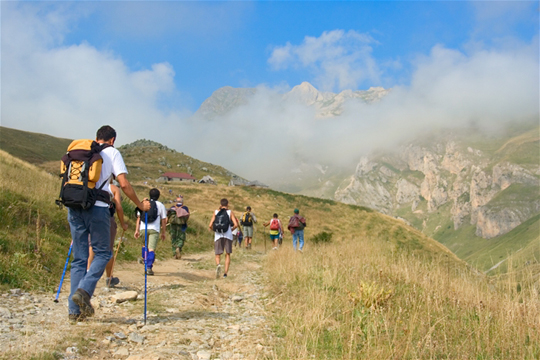
Bugging Out With Your Family
Having to leave your home during a crisis will be one of the hardest decisions you make. Essentially, once you decide to evacuate your survival and that of your family depends on your knowledge, mindset and the materials, tools and supplies you have in your packs. Typically, most experts will recommend that each person in your group or family have identical items, in their bug out bags. This insures that if someone is separated they have what they need to survive and that they do not have essentials in their pack you would need.
Redundancy is important so make sure each pack is a standalone survival. If one person is carrying food, one is carrying water and so on, and you become separated this is problematic and will jeopardize everyone’s survival. If you have, children make sure, each pack has items that the child needs and if one parent or the other becomes separated with the child they have what the child will need.
Carrying Children When Bugging Out
You want your child where you can see them and where they can see you, but carrying a child in a front pack may not be the best option in a survival situation. Carry the child in an approved pack on your back, and carry your survival gear in a front pack. Your spouse or partner can then monitor the child from the back as you essentially walk point.
Confrontations will be frontal and you need to be able to bring weapons to bear and then use them. You cannot fire a weapon with a baby strapped to your chest. You cannot go through a door that may slam against your front or break brush with a baby strapped to your front. Always have the baby facing your back. Protect the child’s ears and face. You must dampen the sound of gunshots and prevent gunshot residue from getting in the child’s eyes.
Use front packs and instead of another backpack, you will be carrying the child in a child backpack. The front packs will not hold as much gear so it is important you also have a load-bearing belt on that allows you to clip on canteens, knives, hatchets, machetes, flashlights and weapons.
If in a confrontation, have your spouse or partner put their back to your back to help shield the child. You will be facing in different directions to monitor for multiple threats. Always have the child between both of you and always away from the threat. Be mindful of ejected shells that can fly back and strike the child. Crouch slightly with your weak foot forward, feet shoulder width apart, bring your head down, and weapon up slightly. Learn to shoot over the sights, (point shooting) because it may be difficult or impossible to shoulder the weapon or to bring up to sight along the barrel.
This combat stance lowers your profile and makes you less of a target, allows you to move and shoot and provides balance to absorb any recoil. Move in this position toward cover. Move as if you are holding a full glass of water and are trying to move as quickly as possible without spilling it. You will naturally hold the glass (weapon) away from the body for balance and stability and yet you can move your upper body and arms left to right to shoot as you move. Be mindful of where the child’s head is because you do not want it exposed above your shoulders.
Do not shoulder a weapon when the barrel is hot because the child could touch the hot surface. Most shotguns can be fitted with heat shields to protect against burns. Learn to carry a long gun in the port arms position across your chest if there is a possibility of a confrontation. This means one hand on the forearm and your trigger finger/hand on the receiver. Once in this position you can bring the weapon to bear quickly. Never fire from the prone position with a child on your back because there are too exposed in this position.